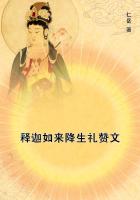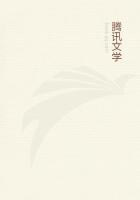Nuniz has it that Virupaksha's son "Padearao,"the last of the old line,fled from the capital when the usurper Narasimha seized the throne;that the latter reigned forty-four years,and died leaving two sons.These youths being too young to govern,the dying king intrusted the kingdom to his minister,Narasa Naik,and both the princes were murdered.Narasa seized the throne,and held it till his death.The length of his reign is not given.His son,"Busbalrao"(?Basava Raya),succeeded,and reigned six years,being succeeded by his brother,the great Krishna Deva Raya.Now we know that Krishna Deva Raya began to reign in A.D.1509.This gives 1503for the date of the accession of his predecessor,"Busbal."If we allow five years for the reign of Narasa --a pure guess --we have his accession in 1498A.D.,and the forty-four years of Narasimha would begin in A.D.1454;but this would apparently coincide with the reign of Mallikarjuna,son of Deva Raya II.It is perhaps possible that in after years the usurper Narasimha's reign was measured by the Hindus from the time when he began to attain power as minister or as a great noble,and not from the date when he actually became king;but this is pure conjecture.
Firishtah mentions a certain "Sewaroy"as being raya of Vijayanagar in 1482,shortly before the death of Muhammad Shah Bahmani.Speaking of the new sovereign of Bijapur,the first of the Adil Shahs,in 1489,the historian tells us that the Adil's rival,Kasim Barid,asked the then minister of Vijayanagar for aid against the rising power of his enemy;[171]and that "the Roy being a child,his minister,Heemraaje,[172]sent an army"and seized the country as far as Mudkal and Raichur.This occurred in A.H.895,which embraces the period from November 1489to November 1490."HEEMraaje,"therefore,is probably for SIMHA or Narasimha Raja,or perhaps for Narasa,otherwise called Vira Narasimha.
Firishtah also gives another account of the same event.According to this,the Adil Shah,hearing of dissensions in the Hindu capital,marched,apparently in 1493,against Raichur,when Heemraaje,having settled these dissensions,advanced "with the young Raya"to that city.A battle ensued,in which Heemraaje was defeated;and the young king being mortally wounded,and dying before he reached home,Heemraaje seized the government and the country.
There are,furthermore,two other passages in Firishtah dealing with the overthrow of the old dynasty and the accession of "Heemraaje."One[173]runs as follows:--"Heemraaje was the first usurper.He had poisoned the young Raja of Beejanuggur,son of Sheoroy,and made his infant brother a tool to his designs,by degrees overthrowing the ancient nobility,and at length establishing his own absolute authority over the kingdom."The other[174]states:--
"The government of Beejanuggur had remained in one family,in uninterrupted succession,for seven hundred years,when Seoroy dying,was succeeded by his son,a minor,who did not live long after him,and left the throne to a younger brother.He also had not long gathered the flowers of enjoyment from the garden of royalty before the cruel skies,proving their inconstancy,burned-up the earth of his existence with the blasting wind of annihilation.[175]Being succeeded by an infant only three months old,Heemraaje,one of the principal ministers of the family,celebrated for great wisdom and experience,became sole regent,and was cheerfully obeyed by all the nobility and vassals of the kingdom for forty years;though,on the arrival of the young king at manhood,he had poisoned him,and put an infant of the family on the throne,in order to have a pretence for keeping the regency in his own hands.[176]Heemraaje at his death was succeeded in office by his son,Ramraaje,who having married a daughter of the son of Seoroy,by that alliance greatly added to his influence and power."He then proceeds to describe an event that took place in 1535or thereabouts,which will be considered in its place.
Writing of the events of the year 1530,[177]we find Firishtah stating that the affairs of Vijayanagar were then in confusion owing to the death of Heemraaje,who was newly succeeded by his son Ramraaje.And this passage helps us definitely to the conclusion that his Heemraaje,or Timma Raja,was the Muhammadan name for the ruler of the state during the reigns of Narasimha,Narasa or Vira Narasimha,and Krishna Deva Raya,the latter of whom died in 1530.Firishtah seems to have confused Narasa's and Krishna Deva Raya's powerful minister,Saluva Timma,with Narasimha and Narasa,and made all three one person."Ramraaje"is mentioned as king by Firishtah from the accession of Achyuta in 1530down to the year 1565.
Though names and details differ,it will be observed that there is evidently a common basis of truth in the accounts given by Firishtah and Nuniz.Both relate the deaths of two young princes,brothers,the subsequent murder of two other heirs to the kingdom,and the usurpation of the throne by a minister.
With these remarks we turn to the more reliable portion of Firishtah's narrative.
Yusuf Adil Khan proclaimed himself independent king of Bijapur in A.D.1489.Shortly afterwards his rival,Kasim Barid,who ultimately became sovereign of the territories of Ahmadabad,in a fit of jealousy called in the aid of Vijayanagar against Bijapur,promising for reward the cession of Mudkal and Raichur,or the country between the two rivers.Narasimha collected the forces of the Hindus,crossed the Tungabhadra with a large army,and after laying waste the country seized the two cities Mudkal and Raichur,which thus once more passed into the possession of Vijayanagar.















